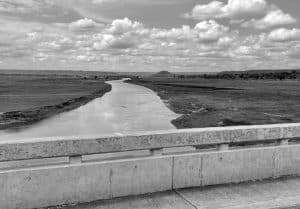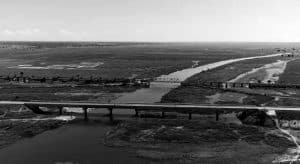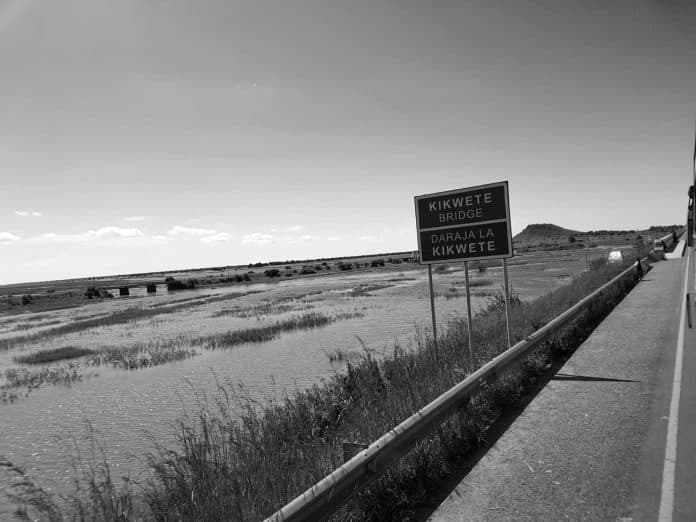Introduction to the Kikwete Bridge
Tanzania, a nation renowned for its stunning natural beauty and rich cultural heritage, has consistently prioritized the development of its infrastructure to drive economic growth and improve the lives of its citizens. One such remarkable project that exemplifies this commitment is the Kikwete Bridge, a remarkable feat of engineering that has transformed the landscape and connectivity of the region.
The Kikwete Bridge, named after the former president of Tanzania, Jakaya Kikwete, is a testament to the country’s vision for the future. This impressive structure spans a significant waterway, connecting communities and facilitating the movement of people, goods, and services across the region. As you explore the bridge and its surrounding areas, you’ll be struck by the sheer scale and grandeur of this engineering marvel, which has become a symbol of Tanzania’s unwavering dedication to progress and development.
Importance of infrastructure development in Tanzania
Infrastructure development is a crucial component of Tanzania’s economic and social transformation. In a country where vast distances and geographical challenges have historically posed barriers to connectivity, the strategic investment in infrastructure projects like the Kikwete Bridge has played a pivotal role in unlocking the nation’s vast potential.
By improving transportation networks, enhancing accessibility, and fostering greater integration between urban and rural areas, Tanzania has been able to drive economic growth, facilitate the movement of goods and services, and improve the overall quality of life for its citizens. The Kikwete Bridge, in particular, has emerged as a centerpiece of this infrastructure development strategy, serving as a vital link that connects communities, stimulates trade, and enhances the country’s competitiveness on the global stage.
The significance of the Kikwete Bridge

The Kikwete Bridge is more than just a physical structure; it represents the aspirations and achievements of the Tanzanian people. This iconic landmark symbolizes the country’s commitment to investing in its future, to overcoming geographical challenges, and to building a more prosperous and interconnected nation.
As you cross the bridge, you’ll be struck by the sheer scale and grandeur of the structure, which rises majestically over the waterway. The bridge’s sleek and modern design, coupled with its impressive dimensions, evokes a sense of national pride and a collective belief in the power of infrastructure to transform lives.
Construction and design of the Kikwete Bridge
The Kikwete Bridge was an engineering marvel that required the expertise and dedication of a talented team of professionals. Spanning a distance of over 1.5 kilometers, the bridge was constructed using advanced techniques and materials to ensure its structural integrity and longevity.
The design of the Kikwete Bridge was a carefully considered process that took into account the unique geographical and environmental factors of the region. The bridge’s striking appearance is the result of a harmonious blend of form and function, with its elegant arches and streamlined silhouette complementing the surrounding landscape.
The construction of the Kikwete Bridge was a complex and challenging undertaking, requiring the coordination of multiple stakeholders, the implementation of rigorous safety protocols, and the utilization of cutting-edge construction equipment and technologies. Despite the obstacles, the project was completed on schedule and within budget, a testament to the skill and determination of the construction team.
Impact of the Kikwete Bridge on local communities
The Kikwete Bridge has had a transformative impact on the local communities it serves, connecting previously isolated regions and facilitating the movement of people, goods, and services. This improved connectivity has had a profound effect on the social and economic well-being of the surrounding areas.
For residents, the bridge has provided greater access to essential services, such as healthcare and education, as well as increased opportunities for employment and entrepreneurship. The enhanced mobility has also enabled the exchange of cultural ideas and the strengthening of social ties, fostering a greater sense of unity and belonging among the diverse communities in the region.
Moreover, the Kikwete Bridge has had a significant impact on the local economy, serving as a vital conduit for the transportation of agricultural products, raw materials, and manufactured goods. This improved access to markets has empowered local businesses, creating new jobs and generating revenue that can be reinvested into the community.
Economic benefits of the Kikwete Bridge
The economic impact of the Kikwete Bridge extends far beyond the local communities it serves, with the project playing a crucial role in Tanzania’s broader economic development strategy. By improving connectivity and facilitating the movement of goods and services, the bridge has become a vital cog in the country’s transportation network, enhancing its competitiveness and attracting new investment opportunities.
The Kikwete Bridge has unlocked previously untapped economic potential, enabling the efficient transport of agricultural products, raw materials, and manufactured goods to domestic and international markets. This improved access to markets has led to increased trade and commerce, creating new jobs and generating revenue that can be reinvested into the local and national economies.
Furthermore, the construction of the Kikwete Bridge has had a significant multiplier effect, stimulating economic activity in related industries, such as construction, logistics, and tourism. The project has also attracted the interest of foreign investors, who have recognized the strategic importance of Tanzania’s infrastructure development and the opportunities it presents for long-term growth and prosperity.
Environmental considerations in the construction of the Kikwete Bridge

The construction of the Kikwete Bridge was not without its environmental considerations, as the project team recognized the importance of minimizing the project’s impact on the surrounding ecosystems. Throughout the planning and construction phases, great care was taken to ensure that the bridge’s design and construction methods were environmentally responsible and sustainable.
One of the key environmental considerations was the preservation of the local wildlife and their habitats. The bridge’s alignment was carefully selected to avoid disrupting sensitive ecological areas, and the construction process incorporated measures to protect the region’s biodiversity, including the relocation of endangered species and the implementation of strict waste management protocols.
Additionally, the Kikwete Bridge project incorporated sustainable design elements, such as the use of energy-efficient lighting and the integration of renewable energy sources. These initiatives not only reduced the bridge’s carbon footprint but also served as a model for future infrastructure projects in Tanzania, demonstrating the country’s commitment to sustainable development and environmental stewardship.
Challenges faced during the construction of the Kikwete Bridge
The construction of the Kikwete Bridge was not without its challenges, as the project team faced a range of obstacles that required innovative solutions and a steadfast commitment to the project’s successful completion.
One of the primary challenges was the complex logistics of transporting materials and equipment to the remote construction site, which was situated in a region with limited infrastructure. This logistical hurdle required the implementation of carefully coordinated supply chains and the utilization of specialized transportation methods to ensure the timely delivery of resources.
Additionally, the project team had to contend with the unpredictable and often harsh environmental conditions of the region, including heavy rainfall, strong winds, and fluctuating water levels. These factors necessitated the development of robust contingency plans and the adoption of construction techniques that could withstand the demanding conditions.
Despite these challenges, the project team demonstrated remarkable resilience and ingenuity, drawing upon their collective expertise to overcome obstacles and deliver the Kikwete Bridge on time and within budget. This achievement is a testament to the dedication and skill of the engineers, construction workers, and project managers involved in the project.
Future infrastructure projects in Tanzania
The success of the Kikwete Bridge has served as a catalyst for Tanzania’s continued investment in infrastructure development, as the country recognizes the vital role that these projects play in driving economic growth, improving connectivity, and enhancing the quality of life for its citizens.
In the coming years, Tanzania has ambitious plans to expand and modernize its transportation network, with the Kikwete Bridge serving as a model for future infrastructure projects. These initiatives may include the construction of additional bridges, the expansion of road networks, the development of high-speed rail systems, and the upgrading of existing ports and airports.
As Tanzania continues to invest in its infrastructure, it will be crucial for the government to maintain a focus on sustainable development, ensuring that new projects are designed and constructed with environmental considerations in mind. By embracing innovative technologies, promoting public-private partnerships, and fostering a culture of collaboration, Tanzania can continue to position itself as a regional leader in infrastructure development, driving economic prosperity and improving the lives of its people.
Conclusion: Celebrating Tanzania’s commitment to infrastructure development
The Kikwete Bridge stands as a testament to Tanzania’s unwavering commitment to infrastructure development, a strategic investment that has transformed the country’s connectivity, fueled economic growth, and improved the quality of life for its citizens. As you reflect on the bridge’s significance, it becomes clear that this remarkable project is more than just a physical structure; it is a symbol of the nation’s determination to overcome challenges, embrace innovation, and build a brighter future for all.
The Kikwete Bridge serves as a shining example of what can be achieved when a country dedicates itself to the pursuit of progress and development. By continuing to prioritize infrastructure projects that enhance mobility, promote economic opportunities, and foster social cohesion, Tanzania can unlock its full potential and solidify its position as a regional powerhouse.
As you’ve seen, the Kikwete Bridge is a remarkable achievement that showcases Tanzania’s commitment to infrastructure development.
For more information on infrastructure click here!

































